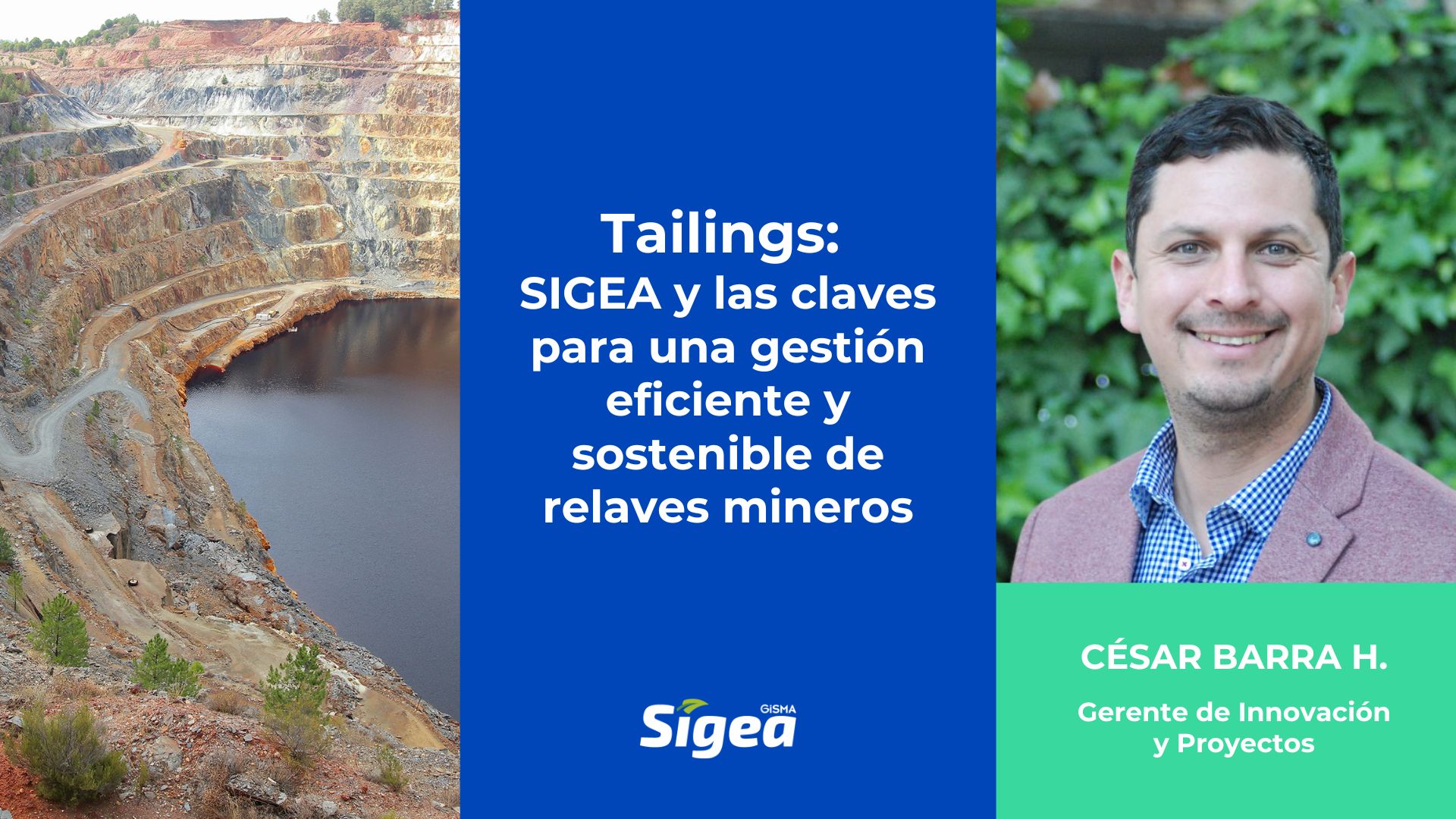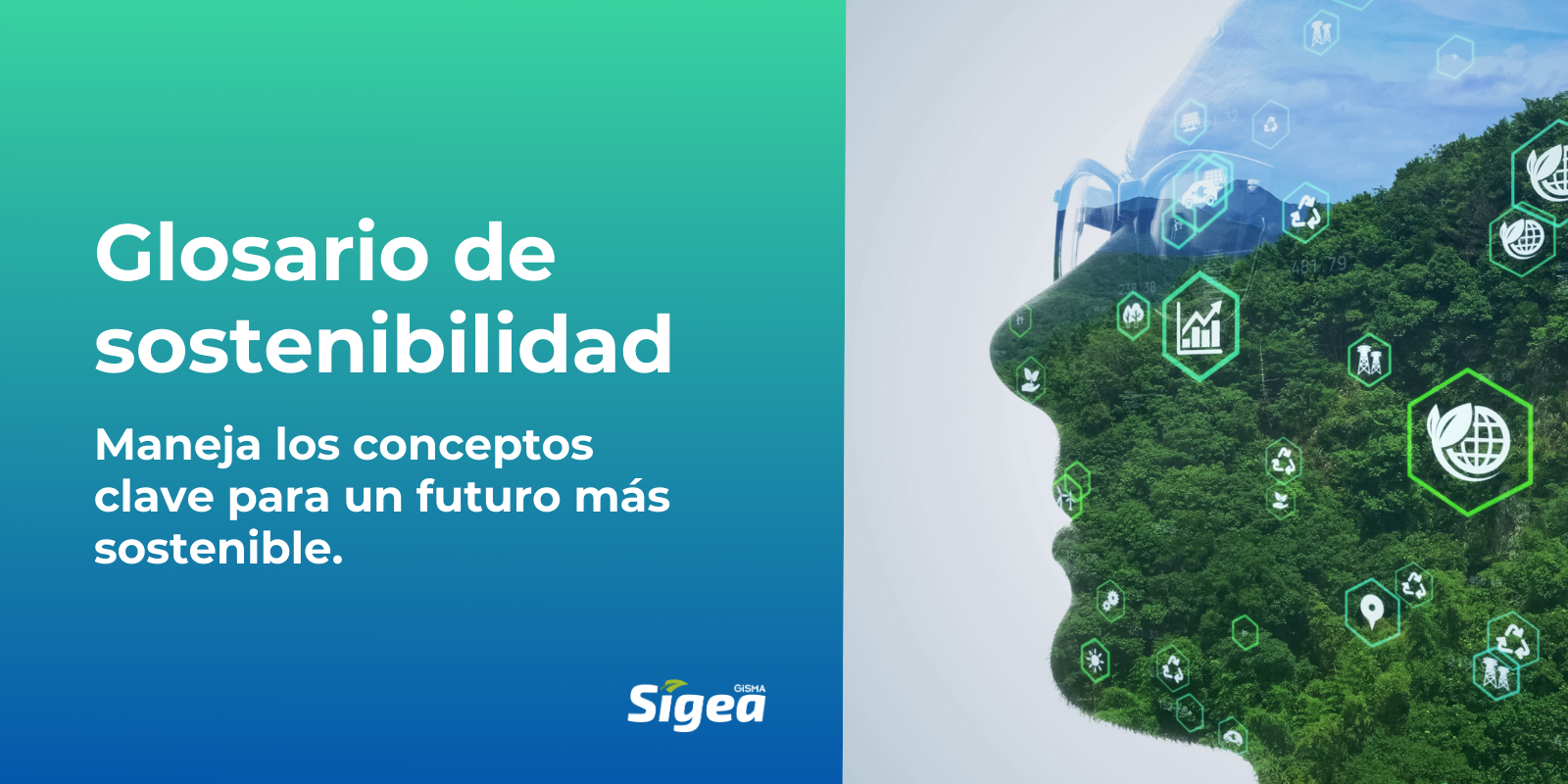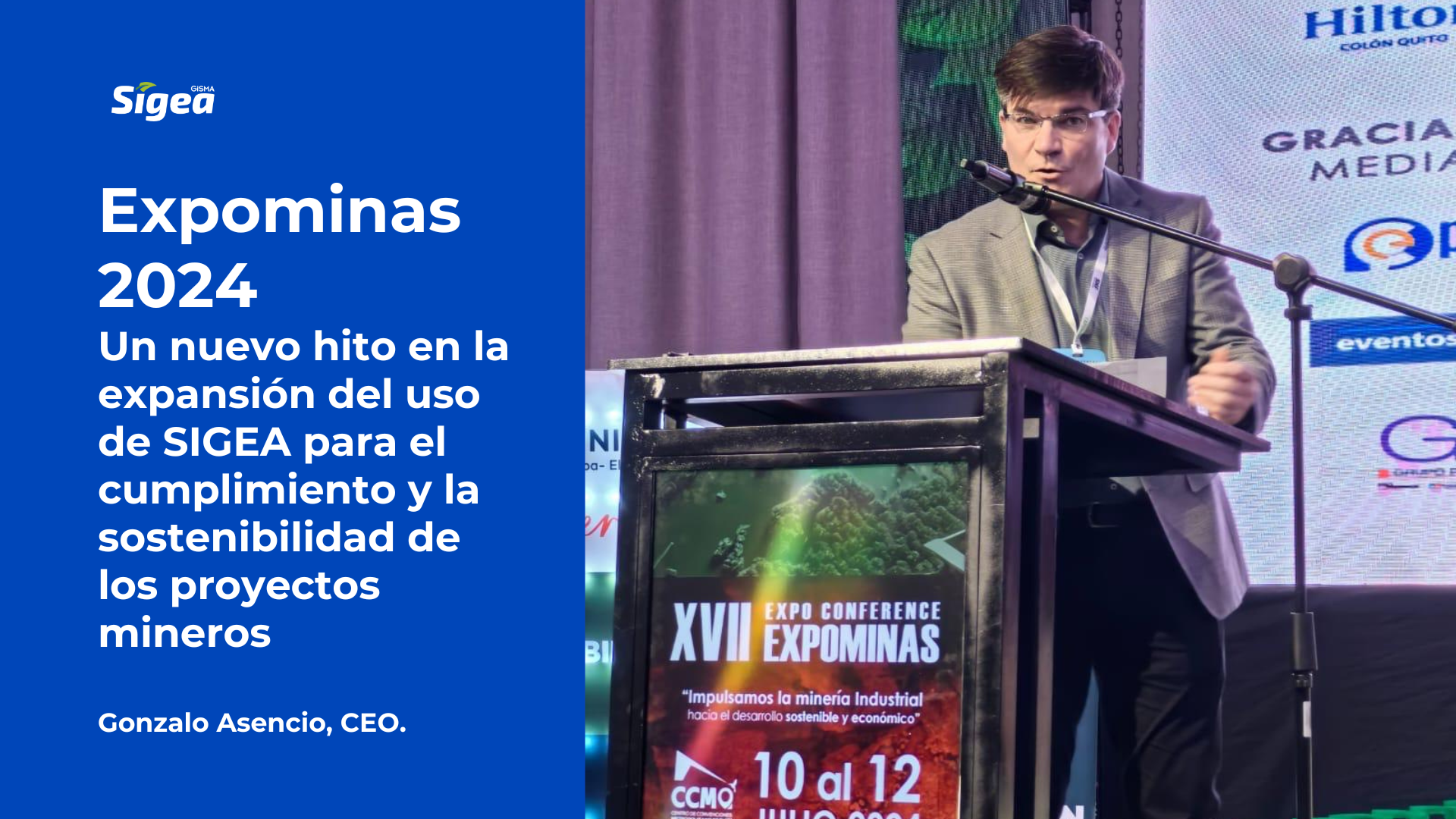On the occasion of Tailings 2023 Chile, a conference that took place in June in Santiago, we wanted to take a look at what it means to build and manage a tailings facility.
The event organized by the Advanced Mining Technology Center (AMTC), TAILENG Center, The Tailings Center and Gecamin, who are dedicated to technological developments in the mining sector, gave us the opportunity to highlight the importance of complying with global ESG regulations and standards in this area. In that sense, with SIGEA Software we have a lot of this advanced work with our clients in the mining industry.
Analyzing, minimizing and controlling the risks of non-compliance, and at the same time making information on processes such as tailings and water resource management transparent, is essential for the sustainability of a project.
Tailings and regulations
A tailings deposit must comply with specific regulations, mainly expressed in Supreme Decree 248, which regulates the “approval of design projects, construction, operation and closure of tailings deposits”, where the main permit to be obtained is the “Authorization for the construction of tailings deposits“.
The spirit of this permit is “to ensure the physical and chemical stability of the reservoir and its surroundings, in order to protect the environment in a manner that does not endanger human life and health”.
Permission folder
In order to process the authorization for the construction of tailings deposits, it is required to prepare a permit folder, which must contain technical background information that will allow the authority to evaluate the authorization.

The requirements for processing the permit, as well as the detailed requirements that will allow the corresponding folder to be assembled, are available in SIGEA Software.
It is worth mentioning that assembling the folder is the first step, then comes the processing of the permit and, after obtaining the permit, it is very important to manage the compliance of everything related to it, in order to comply with the requirements and deadlines that are part of the requirements to which the Company is committed. In SIGEA Software there are specific modules that allow you to manage and monitor the progress and status of permits.
Details of all the background information can be found in SIGEA in the Permit Planning Section.
We recommend placing special emphasis on:
- Submission of geological, geotechnical, hydrological, hydrogeological, seismic, meteorological, topographical and other relevant information.
- Presentation of a flow diagram and general plan of the works associated with the tailings deposit.
- Determination of the risk area potentially affected in the event of collapse or removal of the tailings dam wall.
- Emergency manual for control, mitigation, repair and compensation of the effects of accidents, emergency situations and natural events, as appropriate.
To go into more technical details, we can mention the various items that must be considered, for example, for the construction permit application, which must at least contain:
a. Location and general description of the mining site and process of the Ore Beneficiation Plant that generates the tailings.
c. Deposit capacity and tailings deposition rate in tons/day, its useful life and annual growth. In the case of a Tailings Pond, indicate what percentage of the tailings will be deposited in the wall.
e. Description of the construction method, considering the provisions of Article 6 of S.D. 248/2007.
f. In the case of a tailings dam, the characteristics of the sand wall must be indicated; granulometry; humidity; compaction method; construction method, central axis or downstream, and the way in which the slats will be deposited.
g. Description of the dimensions of the reservoir in terms of height and length of the wall, as well as the area and volume of the reservoir, as well as its Growth Plan.
h. Indicate if there are other adjacent deposits and their main characteristics.

Also, when applicable, SIGEA software allows to categorize and present in an organized manner the description of the instrumentation and control systems that will be used to monitor the structural and hydraulic behavior of the reservoir, including the variables:
a. Pore pressures
b. Water table
c. Displacements
d. Settlements
e. Leaks
f. Seismic accelerations
g. Others recommended by the designer
These are just some of the points that must be considered to start the construction of a tailings facility and an optimal operation, but as one of the challenges is to control and minimize risks, we must not forget the corresponding Emergency Manual, which supports the control, mitigation, restoration and compensation of the effects of accidents, emergency situations and natural events, as appropriate.
En este sentido, se debe considerar que el Manual de Emergencias incluya:
a. Location plans of the repository and the areas that could be affected in the event of the occurrence of different causal events. The extent of possible affected areas should be justified with calculations based on failure mechanisms and tailings transport conditions;
b. Action plans for the execution of immediate measures aimed at eliminating or minimizing the risk of harm to people, including: management of anomaly detection systems, alerts, notices to authorities, evacuation, closing of intake gates, and others deemed necessary; and
c. Personnel training programs for the safe operation of the reservoir and associated works and for the proper handling of emergency situations.
Thus, of the permits associated with the tailings deposit, there are at least 100 legal obligations that must be managed in the operation and that can be organized and managed in an efficient and coordinated manner with Sigea, where it is coordinated from the collection or obtaining of data, managing and organizing them in the project process; from the beginning, its execution and until the end of its useful life.

Monitoring technologies
We also find it interesting to emphasize that the use of advanced monitoring technologies, such as continuous monitoring sensors and other supporting technologies such as satellite imagery, radar, machine learning and data analysis, are tools that provide valuable information to improve tailings management, optimize processes and ensure a more efficient and safe operation.
We firmly believe that these monitoring technologies can serve as the solid foundation on which other key aspects of tailings management are built, driving improved performance in the mining industry.
In our experience, access to accurate real-time data, processed with SIGEA Software, allows us to generate critical controls and effective action plans, optimize water management and improve monitoring and control systems. Having the right technology to manage and analyze the data collected is essential in making informed decisions.
We hope to see more instances, forums and conferences like Tailings 2023 Chile, because they serve as meeting places for those seeking sustainable development, both in socio-environmental issues, as well as in the economic sustainability of human development.
More about César Barra Hernández
Commercial Engineer, with more than 18 years of experience in the leadership of technological projects focused on the Environment. In charge of providing, estimating, executing and controlling financial resources, with great negotiating power, he has maintained commercial relationships with the main technology suppliers in the region.
Check out this article in our Linkedin
Contact us to help you evaluate, prioritize and manage your project.



